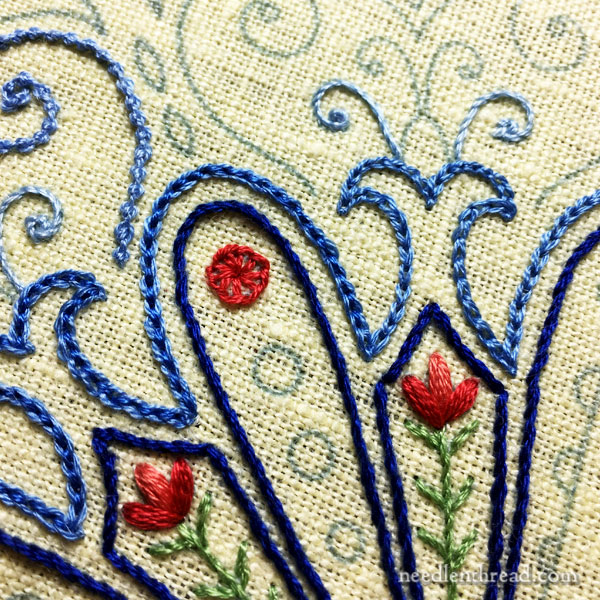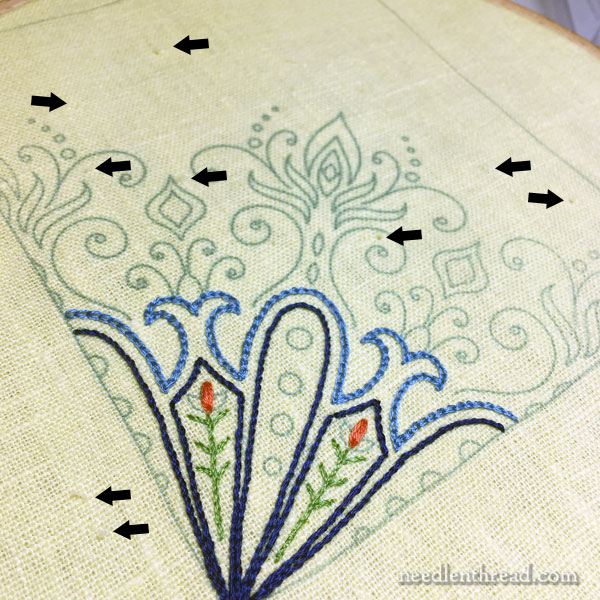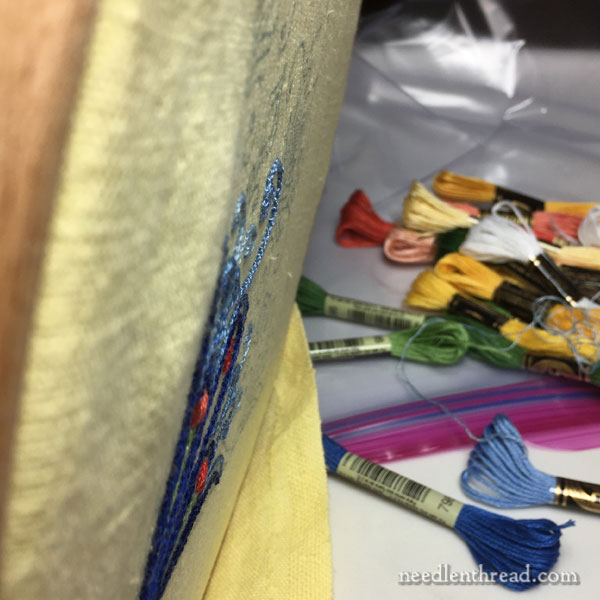I don’t really want you to stop stitching! No, no! Never that!
The title above is what I finally had to say to myself the other day. I knew I was wasting my time from the very start of the project. I knew it before I put design to fabric, fabric in hoop, thread in needle, or stitch on design.
I knew it, and yet I persisted. But I finally reached a point when I had to tell myself, “Stop!”
Now, don’t get me wrong. I don’t have some inflated value of what my own time is worth. How we value our time depends on so many different circumstances, and normally, we (or at least I) don’t consider the “value” of time when I’m getting a lot of pleasure from stitching, no matter what kind of stitching it is, how good it’s turning out, or what it’s intended for.
But there comes a point!
For me, it’s that point when I know the thing I’m working on is not going to turn out how I want it to; when I know that, no matter what I do to it, it won’t work! And once I know that, there’s no point in going forward.

I was going to title today’s article Stitching on Crappy Linen.
(But I couldn’t bring myself to say crappy.)
Friends, please understand me! I’m not that much of a fabric snob. Yes, I love good fabric. But yes, I gladly embrace and admit that some fabrics don’t have to be expensive to be good fabric, suitable for embroidery purposes.
And yet. And yet…there are limits.
The project that I envision here is a tote bag. It’s my dream tote bag. It’s just large enough to hold a few books, maybe some drawing pencils and a sketch book, maybe an embroidery project, maybe just some daily travel items.
In my mind, my dream tote bag is made of heavyweight linen. It’s stiffish, crisp, sturdy, and lined on the inside with a pretty fabric. For this version, the outside would be a buttery-bright yellow and deep sort of French blue. It would have a pocket or two on the outside. And the pockets would be embroidered in a combination of blues, greens, reds, yellows, white – vibrant, kind of those Provençal Frenchy colors. I like those colors! And I like tote bags.
So I did some research, scoured the online fabric shops that various folks have recommended to me, and finally ordered some “heavyweight” linen (they called it “canvas weight” on the website – alas, it is barely medium weight).
You might remember my washing adventures with this linen a couple weeks ago? Yes, this is the same linen.
After I washed it, the soft, fuzzy, limpid nature of the linen was my first clue that I really should not attempt this project with this linen. But still, I thought I should give it a chance. I figured that fusible interfacing might help when constructing the bag, to give it the body that the fabric absolutely lacks.

I measured and cut a piece of fabric about 4-5″ larger on all sides than the pocket, selecting an area of the fabric that had the fewest flaws in it.
The arrows in the photo above point to the fewest flaws. It took me a Whole Lotta Pickin’ to narrow down that area of fabric which seemed fewer-flawed than the rest of the fabric.
Now, linen has slubs – even the best linen occasionally has a slub here and there. A slub is an area of fiber that’s a little thicker than the normal weight of the warp or weft thread, where some of the fiber has clumped up in the weave.
And it’s quite ok for linen to have slubs. But unless you’re wanting really slubby linen for some particular effect, the fewer the slubs, the better the linen.
Sometimes, you can safely remove the extra fiber from the slubby area, without damaging the woven thread. Sometimes, you can’t. When working with linen, you learn to like a slub here and there – it keeps things authentic – and you learn to live with the little darlings.
These aren’t just slubs, though. These little lumpy bumps are more like bulbous hairy outcroppings that stick up from the fabric, that are part of the warp or weft thread, and that, if trimmed, it damages the integrity of the weave.
Still, I can live with those bumps! I was willing to!

I put the fabric in the hoop, as I am wont to do.
There was no possible way to get this fabric drum-taut. It just would not stretch to drum-tautness in the hoop, no matter how I worked it.
Bit I decided I could live with that.
As I began stitching, the spongy feel of the fabric became a quick turn-off.
But, I told myself, you can live with that.
With every stitch, though, the fabric became looser and spongier in the hoop. Mind you, the hoop wasn’t loosening up – it was still tight and true. But the fabric, as I pulled each thread through ever-so-gently, became more and more stretched, more and more warped, until there was no point at all to using a hoop.
You can see a side shot of the fabric in the photo above. Ripples. Waves. Mountainous crests and deep valleys. And fuzzy, bumpy fabric to boot.
But the final straw?
The final straw came after shooting a few photos and taking a close look at the stitching.
And This is The Thing:
Good fabric will always make moderately good stitching look amazing. Bad fabric will always make moderately good stitching look… just Bad.
And that’s when I said, “This is not worth my time.”
I am now seeking a different fabric solution altogether for my Dream Tote Bag. Something affordable. Sturdy. Natural fibers.
Any Suggestions?
Got any good suggestions for an affordable fabric suitable for hand embroidery, heavy enough for a sturdy tote, made of natural fibers, and available in a decent array of colors? I’m all ears! I have a couple test fabrics in mind, but I’m open to any and all suggestions! Feel free to join the conversation below!
Tomorrow, I’ll announce the winner of Beginner’s Guide to Goldwork – if you haven’t joined in on the give-away, there’s still time!
And I’ll have a few interesting tidbits for you, too, for your weekend entertainment.
See you then!